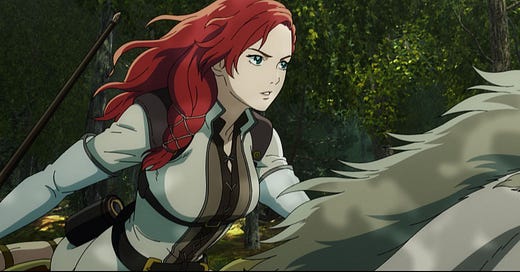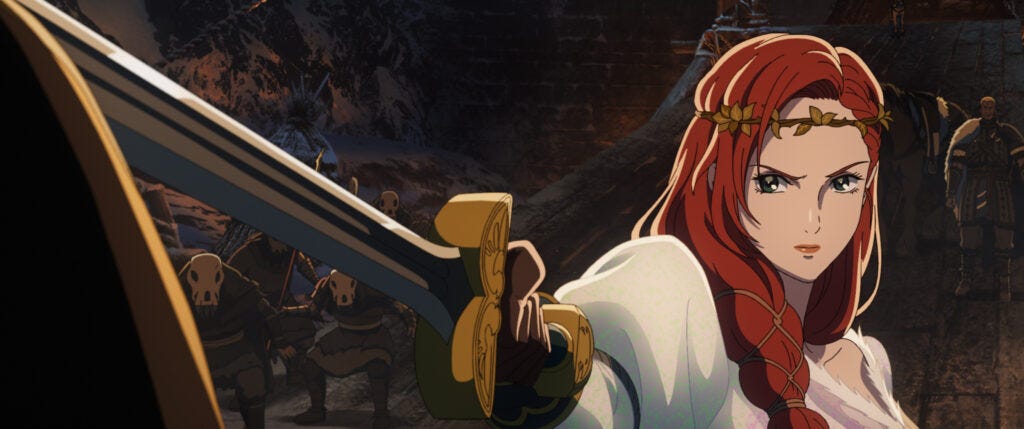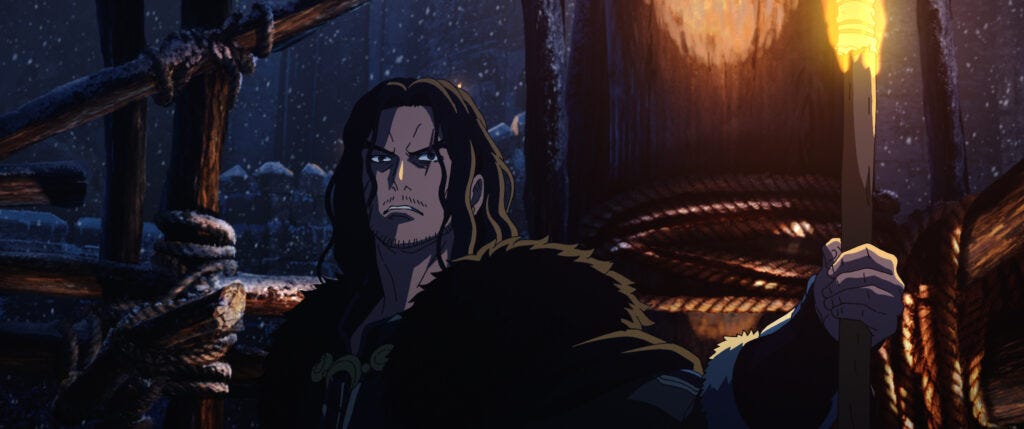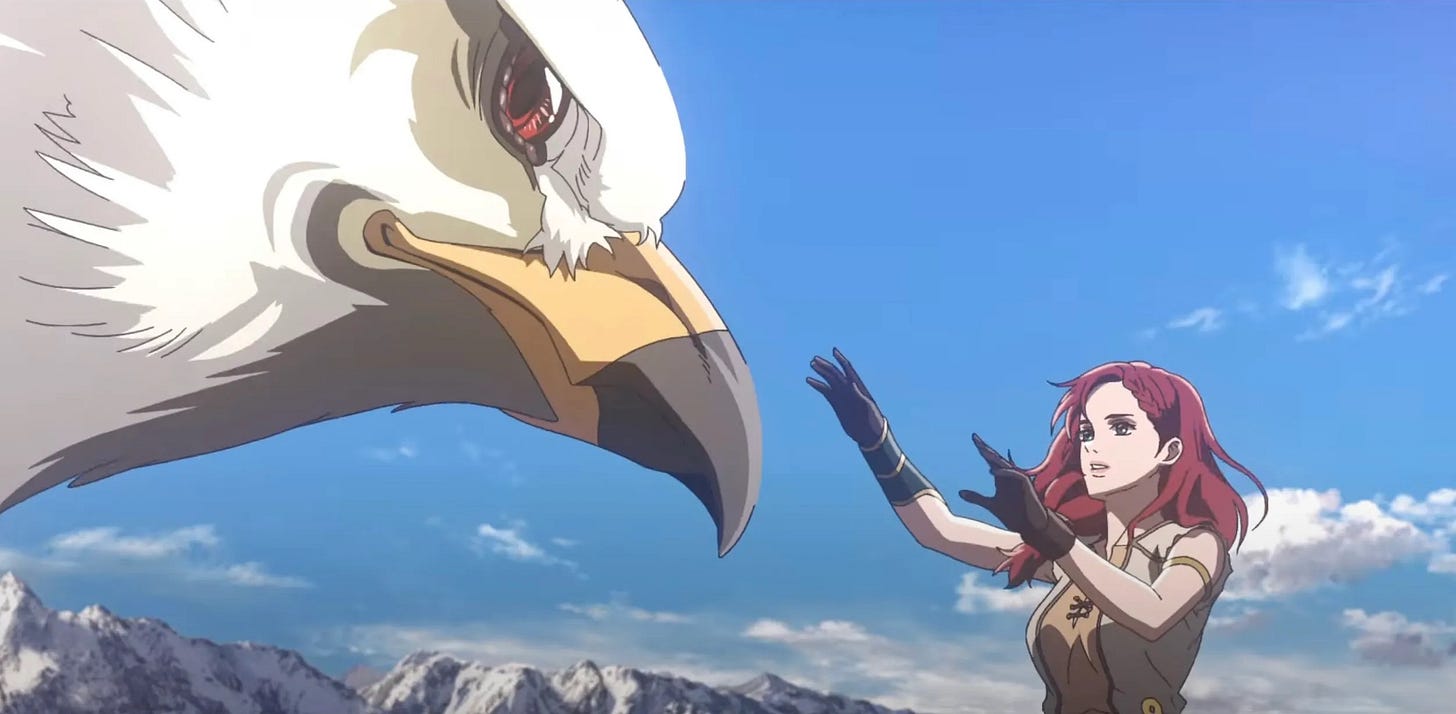Review: The Lord of the Rings: The War of the Rohirrim
An epic, engaging but somewhat jarring anime set 200 years before J.R.R. Tolkien's The Lord of the Rings.
The Lord of the Rings: The War of the Rohirrim takes us back roughly 200 years before the events of J.R.R. Tolkien’s iconic trilogy The Lord of the Rings. This time, Middle-earth is presented as an epic anime film, directed by none other than Kenji Kamiyama — a name that should ring familiar to many anime enthusiasts.
When I first heard about this project, I was both excited and skeptical. J.R.R. Tolkien’s books have had a place of honor on my bookshelf ever since I first discovered them as a teenager, and Peter Jackson’s epic trilogy from the early 2000s still sits firmly at the top of my list of favorite films over 20 years later. I’m such a huge fan of both the books and the films that in 2022, I traveled to New Zealand to see the filming locations for myself and meet some of the people who brought them to life.
So, why the skepticism? While I’d say I know quite a bit about The Lord of the Rings — be it the movies, books, series, or adaptations — I’ve never really been captivated by anime. I understand there are many types of anime and that, like everything else, it comes in varying levels of quality. And there’s no doubt that anime boasts several classics: Akira (1988), Ghost in the Shell (1995), The Boy and the Heron (2023), Princess Mononoke (1997), Spirited Away (2001)… and that’s just naming a few.
Still, anime has never fully clicked with me. But since The Lord of the Rings undeniably has — to the extent that it has literally changed my life — I gave The Lord of the Rings: The War of the Rohirrim a chance. And if it comes down to a battle between something I love and something I could, well, usually do without, we’ll cross that bridge when we get to it.
So where were we? Ah, yes, roughly 200 years before Frodo took his fateful journey to Mordor and Mount Doom, there was drama in the land of the horsemen — Rohan. The kingdom’s ninth king was the legendary Helm (voiced by Brian Cox), later nicknamed Hammerhand, whose name would become synonymous with one of Middle-earth’s most iconic fortresses: Helm’s Deep.
The drama revolves around disagreements among the kingdom’s chieftains, the timeless questions of power, inheritance, and, of course, who gets to sit on the throne.
Amidst this politically charged landscape, we meet Helm’s daughter, Hera (voiced by Gaia Wise). She’s tough, headstrong, and learned to ride before she could walk. While her brothers aspire to follow in their father’s footsteps, Hera dreams of a future far from the royal court in Edoras, Rohan’s capital. Give her open plains, wind in her hair, and, above all, freedom, and Hera is content.
But when Freca (voiced by Shaun Dooley), a chieftain from West-march, arrives at Edoras’ Golden Hall to demand that his son, Wulf (voiced by Luke Pasqualino), marry Hera, things quickly spiral into chaos. In the ensuing brawl, Helm punches Freca so hard that three things happen simultaneously: Freca drops dead, Wulf vows revenge, and Helm earns the nickname Hammerhand.
Wulf is exiled, but years later, he returns with a massive army of wildmen from Dunland to attack Rohan. This marks the beginning of the battle for Rohan, a conflict that will shape the nation, and Middle-earth, for centuries to come.
The film portrays this grand and dramatic conflict, with young Hera becoming a central figure in Rohan’s destiny. It’s epic and awe-inspiring, clearly inspired by Peter Jackson’s The Lord of the Rings — especially The Two Towers.
The film bears a strong resemblance to Jackson’s work. While this is an anime — or maybe because it is — the filmmakers have gone to great lengths to include references and similarities at every turn. For someone like me, who knows both Jackson’s trilogy and the books intimately, it becomes a little too noticeable when even direct lines from the films are reused.
It seems the filmmakers relied heavily on nostalgia for Jackson’s movies to carry this production. And while I love Jackson’s The Lord of the Rings trilogy, I wish this film had dared to stand more on its own in terms of tone and atmosphere. The result feels a bit safe, lacking the originality that could have made this a truly unique interpretation of Tolkien’s world.
What pulls this film in a completely different direction, however, is the animation. Although I’ve seen several of the “essential” anime films, I can’t claim to have any deep knowledge of the style. As I mentioned earlier, anime doesn’t quite sit right with me.
It was jarring to see this world I love so much presented in this way, but fans of the style will probably see it the other way around. Perhaps it’s an “anime thing,” but the uneven animation, “copy-paste” characters, and creatures that either “float” over static landscapes, or change size — often dramatically — from shot to shot, are particularly noticeable in this movie (I’m looking at you, rampaging Mûmakil).
While I'm a massive fan of J.R.R. Tolkien's books, I always appreciate new interpretations of these stories, whether they're playful or dead serious. Peter Jackson's films are my absolute favorites, but I also thoroughly enjoy Amazon's The Rings of Power, which means I'm not a "Tolkien purist." That series, after all, takes many creative liberties with the period it explores.
Now, some Tolkien fans might already be rolling their eyes. "But The Rings of Power isn't real Tolkien, with all the weird stuff going on there," they might say. If you think that, I’ll probably disagree with you. But if you're that type of purist, you might want to think carefully before watching The Lord of the Rings: The War of the Rohirrim. There are scenes here that are definitely not in line with the universe J.R.R. Tolkien created. To avoid spoilers, I won't go into specifics, but they're hard to miss for those familiar with the books, and Tolkien's Middle-earth.
As the title suggests, this is a war film. We witness grand, epic scenes: heavily armed riders thundering across Rohan's plains, hordes of enemies storming fortresses, flames engulfing everything in their path, massive beasts, and intense duels that could decide the nation's future.
But there are also some odd choices. If you're the type of nerd who enjoys pointing out inaccuracies in medieval warfare, you'll have plenty to keep you busy here. I've read about countless battles, both in our own medieval history and in fantasy worlds like Middle-earth. And in this film, I often found myself sighing and thinking things like: "Why did they do that?", "Huh?", "Don't set your own fortress on fire!", or "That's not how you build a siege tower!" While many might overlook such details, for us nerds, it's harder to ignore.
I also noticed a significant plot hole in the story that I hope is just a misunderstanding on my part. Maybe I misheard some dialogue, or misinterpreted something? It happens near the end of the film, so to avoid spoilers, I won't go into detail.
By now, it might seem like I didn't enjoy this film all that much, given how critical I've been. But despite anime not being entirely my thing, and some of the oddities in the plot, this still feels unmistakably like Middle-earth. It's clear that Peter Jackson, and his company, WingNut Films, played a significant role in its creation.
From the film's opening moments, with Miranda Otto's iconic narration, as the camera sweeps over a map of Rohan that gradually transforms into a sprawling landscape, with two majestic, giant eagles soaring overhead, the film sets a tone that immediately draws you in. And if that's not enough to captivate you, the exceptional music likely will.
The Lord of the Rings: The War of the Rohirrim is an epic, grand return to Peter Jackson's interpretation of J.R.R. Tolkien's Middle-earth, now in anime form. If this sounds like your kind of thing, and you can forgive a few quirks here and there, you're in for just over two hours of a memorable, engaging cinematic experience.








